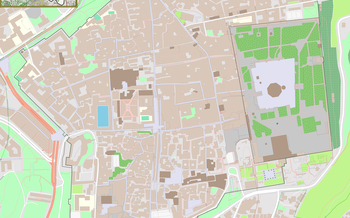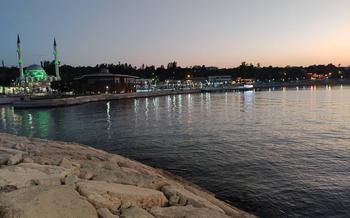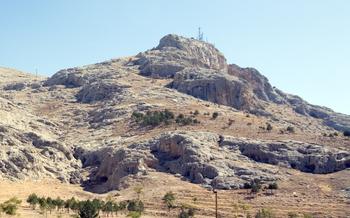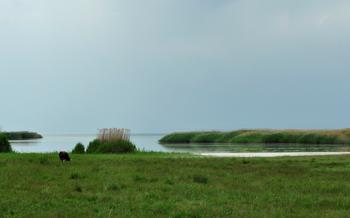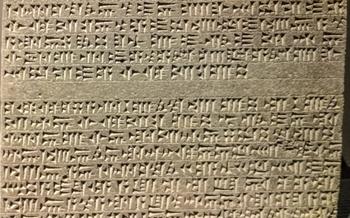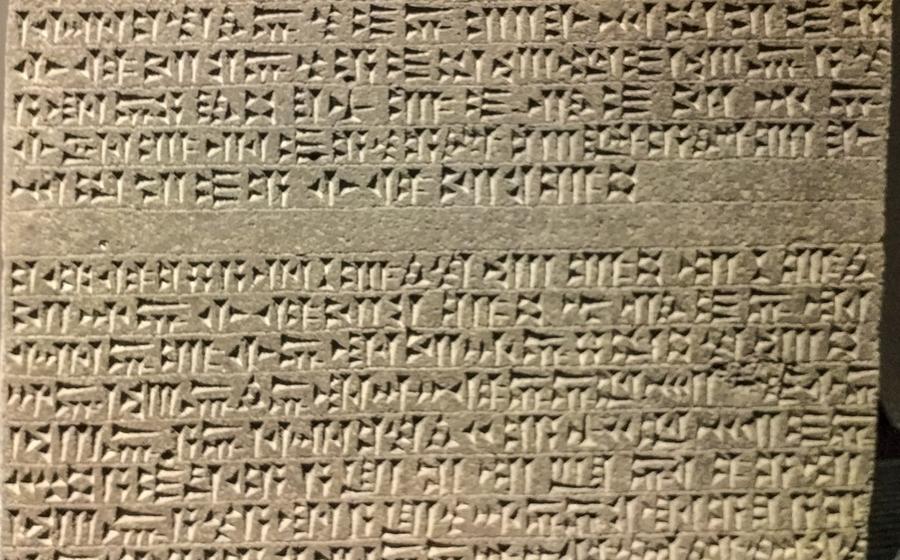
Ayanis Fortress
- Journey to the Past: Exploring Ayanis Fortress
- Architectural Masterpiece: Unveiling the Fortress's Design
- A Strategic Stronghold: The Fortress's Military Significance
- UNESCO World Heritage Site: Recognizing Ayanis Fortress's Global Importance
- Step into History: A Guided Tour of the Fortress
- Capture the Moment: Photography Tips for Stunning Shots
- Explore Van's Hidden Gems
- Responsible Tourism: Preserving Ayanis Fortress for Future Generations
- Capture the Perfect Souvenir: Shopping in Van
- Beyond Ayanis Fortress: Exploring Van's Rich History
- Insider Tip: Unveiling the Secret Chamber
Journey to the Past: Exploring Ayanis Fortress
The history of Ayanis Fortress is intertwined with the rich cultural tapestry of Van. Ancient civilizations, including the Urartians, Romans, Byzantines, and Ottomans, have left their mark on this imposing structure. Archaeological excavations have unearthed artifacts, inscriptions, and remnants of settlements, providing glimpses into the lives of those who once inhabited this strategic stronghold.
Legends and stories abound, adding to the mystique of Ayanis Fortress. One tale speaks of a secret chamber hidden within the fortress, rumored to contain treasures and relics from bygone eras. Another legend recounts the heroic defense of the fortress by a brave warrior who single-handedly repelled an invading army. These stories, passed down through generations, weave a vibrant narrative around the fortress's stones.
Architectural Masterpiece: Unveiling the Fortress's Design
Ayanis Fortress stands as a testament to the architectural prowess of its builders. Its distinctive style blends Byzantine, Armenian, and Islamic influences, creating a unique and visually stunning structure. The fortress's exterior is characterized by its massive stone walls, which feature intricate carvings and decorative elements. These carvings depict various motifs, including religious symbols, geometric patterns, and scenes from daily life.
The fortress's interior is equally impressive, with a complex network of chambers, corridors, and staircases. The main entrance leads to a large courtyard, which is surrounded by various rooms and chambers. These rooms were used for various purposes, including storage, housing, and defense. The fortress also features several towers and gates, which provided additional protection and allowed for strategic observation of the surrounding area.
The building materials used in the construction of the fortress are primarily stone and brick. The stones were carefully selected and shaped to create a strong and durable structure. The bricks were used to fill in the gaps between the stones and to create decorative elements, such as arches and vaults. The fortress's construction techniques are also noteworthy, as they demonstrate a high level of engineering skill. The walls were built using a combination of dry stone masonry and mortar, which allowed for a strong and flexible structure. The fortress also features several vaulted ceilings, which helped to distribute the weight of the walls and towers.
The architecture of Ayanis Fortress is not only impressive from an aesthetic standpoint but also holds symbolic and historical significance. The fortress's design reflects the cultural and religious influences of the various civilizations that ruled over the region. The fortress's fortifications and strategic location also speak to its military importance and its role in protecting the region from invaders.
A Strategic Stronghold: The Fortress's Military Significance
As a strategically significant stronghold, Ayanis Fortress played a crucial role in protecting the region from invaders and maintaining control over trade routes. Its formidable fortifications, including thick walls, towers, and gates, served as a testament to its military prowess and defensive capabilities.
Throughout history, the fortress has witnessed numerous sieges, battles, and conquests, each leaving its mark on the site. From fierce clashes between ancient kingdoms to medieval power struggles, Ayanis Fortress stood as a resilient guardian, bearing witness to the ebb and flow of empires.
Among the notable military events associated with the fortress is the siege of Van in the 16th century, when Ottoman forces laid siege to the fortress for over a year before finally capturing it. The fortress's strategic location and strong defenses made it a prized possession for various empires, as control over it meant controlling a key gateway to the region.
Today, the fortress stands as a testament to the military significance it once held, a reminder of the battles and conflicts that shaped the history of Van and the surrounding region.
UNESCO World Heritage Site: Recognizing Ayanis Fortress's Global Importance
In recognition of its exceptional cultural and historical value, Ayanis Fortress has been designated as a UNESCO World Heritage Site. This prestigious designation is a testament to the fortress's global significance and the need to preserve it for future generations.
Ayanis Fortress meets several criteria for UNESCO designation. It represents an outstanding example of a medieval fortress that has been remarkably well-preserved. Its architectural design and construction techniques are unique and demonstrate the ingenuity of its builders. The fortress also holds immense historical significance as a strategic stronghold that played a crucial role in the region's defense.
The fortress's cultural value is further enhanced by the stories and legends associated with it. These narratives provide insights into the lives of the people who lived and worked within its walls. The fortress has become a symbol of resilience and strength, embodying the spirit of the Van people.
Preserving Ayanis Fortress is of utmost importance for future generations. It serves as a tangible link to the region's rich past and provides valuable insights into medieval architecture and military strategies. Ongoing conservation efforts aim to protect the fortress from the ravages of time and ensure its continued existence for centuries to come.
Step into History: A Guided Tour of the Fortress
To fully grasp the significance and beauty of Ayanis Fortress, embarking on a guided tour is highly recommended. Professional guides, armed with in-depth knowledge and local insights, bring the fortress's history to life, offering a deeper understanding of its architecture, military significance, and cultural context.
Guided tours typically cover the fortress's main highlights, including its imposing fortifications, towers, and gates. Guides will explain the defensive strategies employed by past civilizations and share captivating stories of sieges and battles that took place within the fortress walls. They will also point out hidden architectural details and symbolism often missed by untrained eyes.
Exploring the fortress with a knowledgeable guide allows visitors to connect with the past in a more meaningful way. Guides can provide historical context, answer questions, and offer unique perspectives on the fortress's role in shaping the region's history.
When selecting a tour operator, it's essential to choose a reputable company with experienced guides. Look for tour groups that offer small group sizes, allowing for more personalized attention and interaction with the guide. It's also advisable to book your tour in advance, especially during peak tourist season, to avoid disappointment.
Whether you're a history buff, an architecture enthusiast, or simply someone who appreciates the beauty of ancient ruins, a guided tour of Ayanis Fortress is an experience not to be missed.
Capture the Moment: Photography Tips for Stunning Shots
The Ayanis Fortress, with its imposing structure and picturesque surroundings, offers a wealth of opportunities for capturing stunning photographs. Here are some tips to help you make the most of your photography experience:
-
Golden Hour Magic: Aim to visit the fortress during the golden hours, just before sunrise or after sunset, when the warm, diffused light casts a magical glow on the ancient stones.
-
Composition is Key: Experiment with different compositions to create dynamic and visually appealing shots. Use leading lines, such as the fortress walls or staircases, to draw the viewer's eye into the image.
-
Capture the Details: Don't just focus on wide-angle shots of the fortress. Take the time to capture the intricate details, such as the carvings on the walls, the patterns in the stonework, or the textures of the weathered surfaces.
-
Experiment with Perspectives: Explore different vantage points to create unique and captivating perspectives. Climb to the highest tower to capture panoramic views, or venture into the hidden corners of the fortress to reveal intimate details.
-
Embrace the Weather: Don't let cloudy weather discourage you. Overcast skies can create dramatic and moody shots, especially when combined with the fortress's imposing architecture.
-
Use a Tripod: A sturdy tripod will help you stabilize your camera and capture sharp, blur-free images, especially in low-light conditions.
-
Play with Shutter Speed: Experiment with different shutter speeds to create dynamic effects. Slow shutter speeds can blur moving elements, such as clouds or flags, adding a sense of motion to your shots.
-
HDR for Dynamic Range: Use HDR (High Dynamic Range) photography to capture scenes with a wide range of light and shadow. This technique combines multiple exposures to create an image with balanced highlights and shadows.
-
Be Patient: Photography is all about patience. Take your time to explore the fortress, find the perfect composition, and wait for the right moment to capture that special shot.
Explore Van's Hidden Gems
Venture beyond Ayanis Fortress to discover Van's hidden gems. Immerse yourself in the city's rich history and cultural tapestry by visiting the Van Museum, home to an impressive collection of artifacts that narrate the region's past. Admire the intricate architecture and vibrant tilework of the historic Armenian churches, silent witnesses to the city's diverse heritage. Escape the urban hustle and bustle with a scenic boat trip on Lake Van, the largest soda lake in the world, and marvel at the stunning vistas of the surrounding mountains.
For a truly unique experience, embark on a day trip to Akdamar Island, a serene oasis located in the heart of Lake Van. Explore the beautifully preserved Armenian monastery, admire the intricate carvings adorning its walls, and soak in the tranquility of this sacred site. Alternatively, venture further afield to the ancient city of Çavuştepe, where you can wander among the ruins of a once-thriving settlement and marvel at the remnants of a bygone era.
Discover the vibrant local culture by attending one of Van's many festivals, where you can witness traditional dances, savor delicious local cuisine, and immerse yourself in the city's infectious energy. Whether you prefer to explore historical sites, delve into the region's rich culinary traditions, or simply soak in the unique atmosphere of this captivating city, Van offers an abundance of hidden gems waiting to be uncovered.
Responsible Tourism: Preserving Ayanis Fortress for Future Generations
As responsible travelers, it is crucial to minimize our environmental impact and respect local customs while visiting Ayanis Fortress. Here are some guidelines to ensure sustainable tourism:
-
Tread Lightly: Avoid littering and disturbing the natural surroundings. Stick to designated trails and avoid venturing into sensitive areas.
-
Respect Local Customs: Dress modestly and behave respectfully, especially when visiting religious sites or interacting with local communities.
-
Support Local Businesses: Choose local guides, tour operators, and restaurants to support the local economy and promote cultural exchange.
-
Advocate for Preservation: Raise awareness about the importance of preserving cultural heritage sites like Ayanis Fortress by sharing your experiences and advocating for responsible tourism practices.
By embracing responsible tourism, we can help protect Ayanis Fortress and its surrounding environment for future generations to enjoy.
Capture the Perfect Souvenir: Shopping in Van
Van offers a treasure trove of unique handicrafts and souvenirs that reflect its rich cultural heritage. From intricate handmade rugs and carpets to exquisite silver jewelry and pottery, there's something for every taste and budget.
One of the best places to shop for souvenirs in Van is the Old City Bazaar, a vibrant marketplace where you can haggle with vendors and find one-of-a-kind items. Here, you'll find everything from colorful textiles and traditional clothing to antique jewelry and souvenirs made from local materials.
For those looking for more modern souvenirs, there are several shopping malls in Van that offer a wide range of goods, from international brands to local products.
When shopping in Van, it's important to remember to bargain politely. Bargaining is a way of life in Turkey, and vendors are often willing to give you a good deal if you ask.
If you're an international visitor and want to ship your souvenirs home, there are several shipping companies in Van that can help you arrange for delivery.
Insider Tip: - When shopping for souvenirs in Van, be sure to ask the vendors about the story behind their products. Many of the items are handmade by local artisans, and each one has a unique tale to tell.
-
If you're looking for a truly unique souvenir, consider purchasing a piece of handmade jewelry or pottery from a local artist.
-
Bargaining is a way of life in Turkey, so don't be afraid to haggle with vendors. You can often get a good deal if you're willing to ask.
Beyond Ayanis Fortress: Exploring Van's Rich History
Van is a city steeped in history, with a wealth of historical sites and monuments that tell the story of its past. Beyond the iconic Ayanis Fortress, visitors can delve deeper into Van's rich heritage by exploring these hidden gems.
- Historical Sites and Monuments:
Van is home to several historical sites and monuments that offer a glimpse into its past. The Van Castle, located on a hill overlooking the city, is a testament to the city's ancient past. The castle was built by the Urartians in the 9th century BC and served as their capital. Other notable historical sites include the Van Walls, a series of fortifications built by the Ottomans in the 16th century, and the Van Caravansarai, a 17th-century inn that once served as a resting place for traders and travelers.
- Museums and Cultural Institutions:
Van boasts several museums and cultural institutions that house artifacts and exhibits showcasing the city's rich history and culture. The Van Museum is the largest museum in the city and houses a vast collection of artifacts from the region, including Urartian, Armenian, and Islamic artifacts. The Van Ethnography Museum offers insights into the traditional lifestyle and customs of the people of Van.
- Archaeological Sites and Ancient Ruins:
Van is surrounded by archaeological sites and ancient ruins that provide a glimpse into the region's ancient past. The Urartian ruins at Çavuştepe, located just outside the city, are a testament to the advanced civilization of the Urartians. The site features impressive fortifications, temples, and palaces. Other notable archaeological sites include the Armenian monastery of Akdamar, located on an island in Lake Van, and the ancient city of Tuşpa, the former capital of the Urartian kingdom.
- Traces of Past Civilizations and Empires:
Van has been home to various civilizations and empires throughout history, each leaving its mark on the city. From the Urartians to the Armenians, Persians, Byzantines, and Ottomans, Van has witnessed the rise and fall of numerous empires. Visitors can explore the traces of these past civilizations in the city's architecture, cuisine, and traditions.
Insider Tip: Unveiling the Secret Chamber
Intriguing rumors whisper through the ancient stones of Ayanis Fortress, tales of a hidden chamber concealed within its depths. Local legends speak of a secret passageway leading to a forgotten treasury filled with relics from a bygone era. While the existence of this chamber remains shrouded in mystery, intrepid explorers can embark on a thrilling quest to uncover its secrets.
As you wander through the fortress, keep your eyes peeled for inconspicuous markings or unusual indentations in the walls. These could be clues leading to the elusive chamber. Engage with local storytellers and guides who may possess knowledge passed down through generations. Their insights could prove invaluable in your search.
Exploring the fortress in search of the secret chamber requires caution. Wear sturdy shoes and bring a flashlight to navigate dimly lit passages. Be mindful of your surroundings and respect the integrity of the site. Remember, the true treasure lies in the journey of discovery and the stories it weaves.
